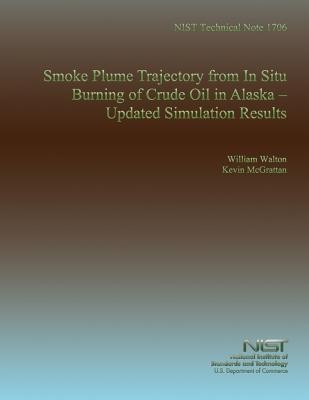
- We will send in 10–14 business days.
- Author: U S Department of Commerce
- Publisher: CreateSpace Independent Publishing Platform
- Year: 2014
- Pages: 66
- ISBN-10: 1495303373
- ISBN-13: 9781495303371
- Format: 21.6 x 28 x 0.4 cm, softcover
- Language: English
- SAVE -10% with code: EXTRA
Reviews
Description
The purpose of this report is to update calculations, originally performed in 1993, that predict the ground level concentration of smoke particulate from hypothetical in situ burns of crude oil spills in Alaska. The reason for the update is that the National Ambient Air Quality Standards (NAAQS) have changed since 1993. These standards formed the basis for establishing "safe distances" for separating potential burning sites from populated areas in Alaska. A total of 28 scenarios were examined, with 2 types of crude oil, 3 wind speeds, 3 fire areas, and winter and summer meteorological conditions. The downwind extents of 3 different concentrations of fine smoke particulate (PM2.5) are presented. The concentration thresholds represent different versions of the NAAQS 24-hour average particulate standard.
EXTRA 10 % discount with code: EXTRA
The promotion ends in 20d.10:32:20
The discount code is valid when purchasing from 10 €. Discounts do not stack.
- Author: U S Department of Commerce
- Publisher: CreateSpace Independent Publishing Platform
- Year: 2014
- Pages: 66
- ISBN-10: 1495303373
- ISBN-13: 9781495303371
- Format: 21.6 x 28 x 0.4 cm, softcover
- Language: English English
The purpose of this report is to update calculations, originally performed in 1993, that predict the ground level concentration of smoke particulate from hypothetical in situ burns of crude oil spills in Alaska. The reason for the update is that the National Ambient Air Quality Standards (NAAQS) have changed since 1993. These standards formed the basis for establishing "safe distances" for separating potential burning sites from populated areas in Alaska. A total of 28 scenarios were examined, with 2 types of crude oil, 3 wind speeds, 3 fire areas, and winter and summer meteorological conditions. The downwind extents of 3 different concentrations of fine smoke particulate (PM2.5) are presented. The concentration thresholds represent different versions of the NAAQS 24-hour average particulate standard.


Reviews